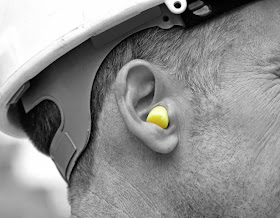NIOSH released a study that examines 30 years of hearing loss trends experienced by workers
exposed to noise while on the job. The study published in the American Journal of Industrial Medicine found that progress has been made in reducing the risk of hearing loss within most industry sectors, but additional efforts are needed within the mining, construction, and healthcare and social assistance sectors.
 |
©iStockphoto.com/shank_ali
|
Approximately 22 million U.S. workers are exposed to hazardous noise at work. Long-term exposure to hazardous noise, a single high noise exposure, or exposure to ototoxic chemicals that damage hearing can cause occupational hearing loss – a job-related illness that is permanent and potentially debilitating, but entirely preventable.
NIOSH researchers examined audiograms – results from hearing tests – for almost 2 million noise-exposed workers from 1981 to 2010.
Some key findings include:
- The overall prevalence of hearing loss for workers in all industries remained consistent at 20% over the entire 30-year period. The prevalence is the total number of workers who have hearing loss (existing and new cases) and illustrates the burden of the illness.
- The incidence and risk of incident hearing loss decreased over time, indicating some progress in occupational hearing loss prevention efforts during the period covered. The incidence is the number of new cases of hearing loss.
- Risks of incident hearing loss were significantly lower during 2006-2010 for every industry sector except mining, and healthcare and social assistance.
The findings in the mining, construction, and healthcare and social assistance sectors are also supported by other research. Efforts to reduce both the burden and risk of hearing loss are still needed. There is no industry where workers can be considered "safe" from hearing loss.
Read the study Trends in Worker Hearing Loss by Industry Sector, 1981–2010 or learn more about hearing loss prevention by visiting CDC's Noise and Hearing Loss Prevention Page. Additionally, visit CDC's occupational hearing loss surveillance page for more on that topic.
Read the study Trends in Worker Hearing Loss by Industry Sector, 1981–2010 or learn more about hearing loss prevention by visiting CDC's Noise and Hearing Loss Prevention Page. Additionally, visit CDC's occupational hearing loss surveillance page for more on that topic.
